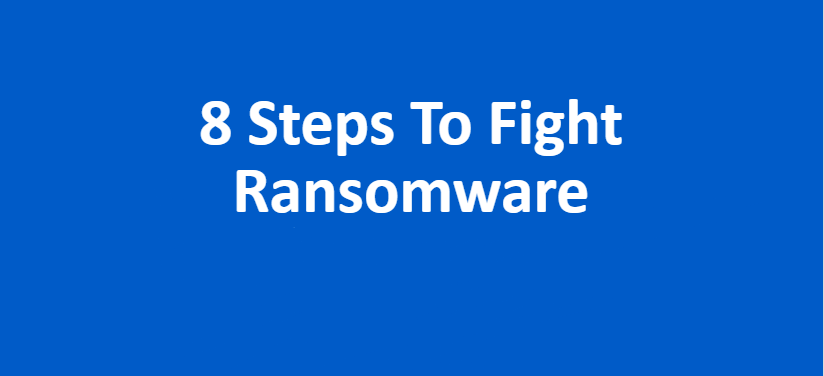Two-thirds of organizations have fallen victim to ransomware
New report finds ransomware attacks grew by over 1,000%


More than two-thirds of organisations have been the target of at least one ransomware attack in the last year, according to a new survey.
Ransomware attacks grew 1,070% year-over-year, according to a recent FortiGuard Labs Global Threat Landscape report. A survey of 450 business leaders from small, mid, and large-sized organizations worldwide also found 49% of respondents indicated they’ve paid the ransom outright.
Despite 67% of organisations reporting they have been a ransomware target (16% say they were attacked three or more times), 96% feel they are moderately prepared. The report found that less than half of respondents have a strategy that includes network segmentation (48%), business continuity measures (41%), a remediation plan (39%), testing of ransomware recovery methods (28%), or red team/blue team exercises (13%) to identify weaknesses in security systems.
And while 84% also report having an incident response plan in place, the composition of that incident response plan is important to investigate, according to the report. The most popular is employee cyber training (61%), indicating the message that end-users are the primary target of ransomware attacks and are the first line of defense against phishing attacks has worked.
Risk assessment plans (60%), offline backups (58%), and cyber security/ransomware insurance (57%) round out the elements included in most incident response plans.
EMEA businesses are more likely to be victims of ransomware than their North American counterparts (79% versus 59%, respectively). Respondents in EMEA and Latin America were more concerned about ransomware attacks and more likely to be victims than their peers in North America and APJ, (79% and 78%, respectively, compared to 59% in North America and 58% in Latin America.)
The report found that phishing lures were the primary attack vector in North America. Remote desktop protocol exploits and open vulnerability ports were the main attack vectors in APJ and LATAM.
Sign up today and you will receive a free copy of our Future Focus 2025 report - the leading guidance on AI, cybersecurity and other IT challenges as per 700+ senior executives
RELATED RESOURCE

Eight steps to fight ransomware
Insights into how you can protect yourself from this ever increasing threat
The top concern of organisations regarding a ransomware attack was the risk of losing data, with the loss of productivity and the interruption of operations following closely behind. In addition, 84% of organisations reported having an incident response plan — cyber security insurance was a part of 57% of those plans.
If attacked, the procedure for 49% of respondents was to pay the ransom outright. For another 25%, it depended on how expensive the ransom was. Of those who paid a ransom, most, but not all, got their data back.
John Maddison, EVP of Products and CMO at Fortinet, said that the high number of attacks “demonstrates the urgency for organisations to ensure their security addresses the latest ransomware attack techniques across networks, endpoints, and cloud.”
Rene Millman is a freelance writer and broadcaster who covers cybersecurity, AI, IoT, and the cloud. He also works as a contributing analyst at GigaOm and has previously worked as an analyst for Gartner covering the infrastructure market. He has made numerous television appearances to give his views and expertise on technology trends and companies that affect and shape our lives. You can follow Rene Millman on Twitter.
-
 OpenAI's 'Skills in Codex' service aims to supercharge agent efficiency for developers
OpenAI's 'Skills in Codex' service aims to supercharge agent efficiency for developersNews The Skills in Codex service will provide users with a package of handy instructions and scripts to tweak and fine-tune agents for specific tasks.
-
 Cloud infrastructure spending hit $102.6 billion in Q3 2025
Cloud infrastructure spending hit $102.6 billion in Q3 2025News Hyperscalers are increasingly offering platform-level capabilities that support multi-model deployment and the reliable operation of AI agents
-
 15-year-old revealed as key player in Scattered LAPSUS$ Hunters
15-year-old revealed as key player in Scattered LAPSUS$ HuntersNews 'Rey' says he's trying to leave Scattered LAPSUS$ Hunters and is prepared to cooperate with law enforcement
-
 The Scattered Lapsus$ Hunters group is targeting Zendesk customers – here’s what you need to know
The Scattered Lapsus$ Hunters group is targeting Zendesk customers – here’s what you need to knowNews The group appears to be infecting support and help-desk personnel with remote access trojans and other forms of malware
-
 Impact of Asahi cyber attack laid bare as company confirms 1.5 million customers exposed
Impact of Asahi cyber attack laid bare as company confirms 1.5 million customers exposedNews No ransom has been paid, said president and group CEO Atsushi Katsuki, and the company is restoring its systems
-
 The US, UK, and Australia just imposed sanctions on a Russian cyber crime group – 'we are exposing their dark networks and going after those responsible'
The US, UK, and Australia just imposed sanctions on a Russian cyber crime group – 'we are exposing their dark networks and going after those responsible'News Media Land offers 'bulletproof' hosting services used for ransomware and DDoS attacks around the world
-
 A notorious ransomware group is spreading fake Microsoft Teams ads to snare victims
A notorious ransomware group is spreading fake Microsoft Teams ads to snare victimsNews The Rhysida ransomware group is leveraging Trusted Signing from Microsoft to lend plausibility to its activities
-
 Volkswagen confirms security ‘incident’ amid ransomware breach claims
Volkswagen confirms security ‘incident’ amid ransomware breach claimsNews Volkswagen has confirmed a security "incident" has occurred, but insists no IT systems have been compromised.
-
 The number of ransomware groups rockets as new, smaller players emerge
The number of ransomware groups rockets as new, smaller players emergeNews The good news is that the number of victims remains steady
-
 Teens arrested over nursery chain Kido hack
Teens arrested over nursery chain Kido hacknews The ransom attack caused widespread shock when the hackers published children's personal data
